8 of the best scented plants to create a perfumed front porch
Gather together a mood-setting mix of plants for a fragrant entrance to your home
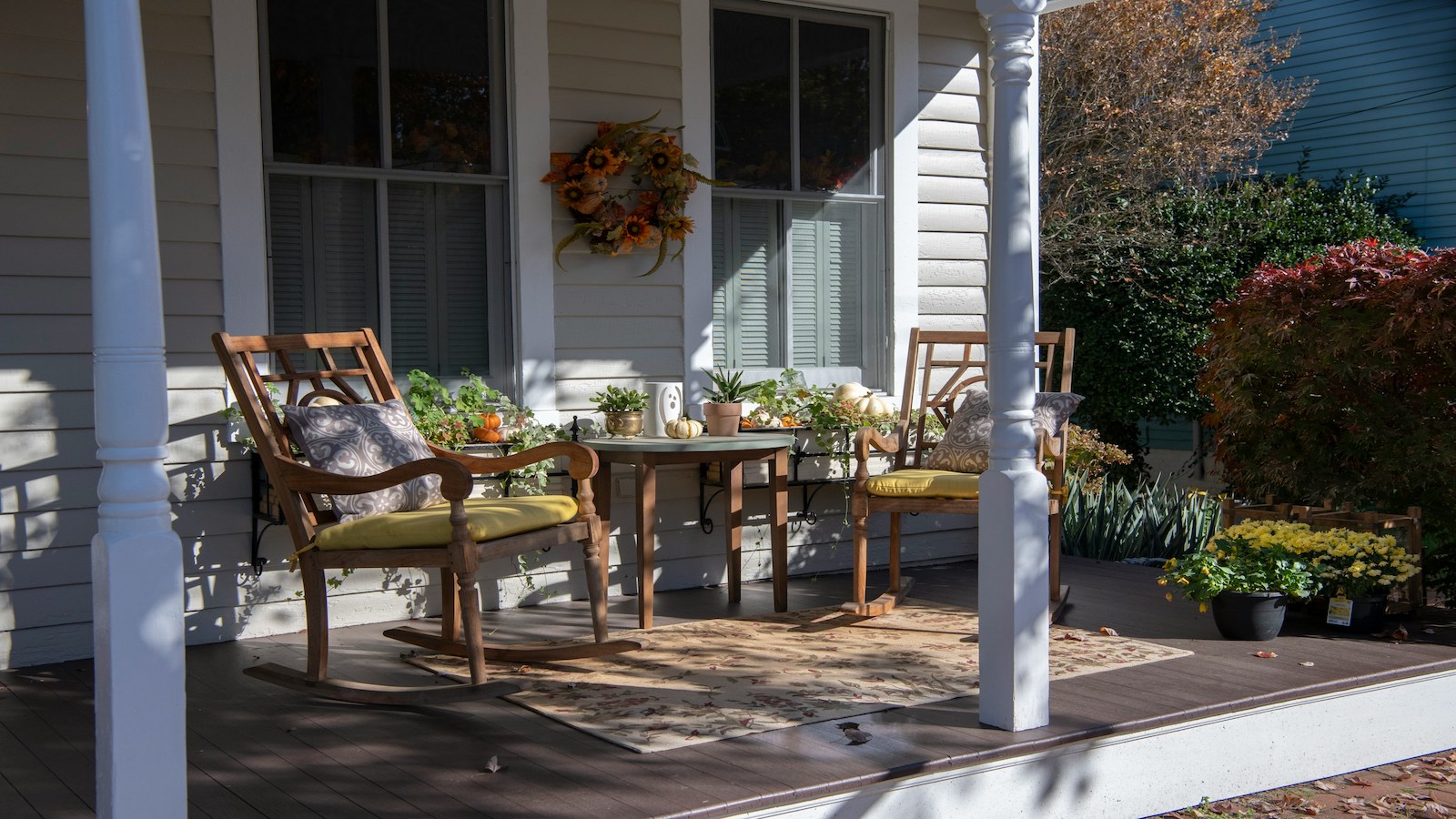

The front porch can be one of the most important spaces in your home. It sets the tone as visitors drop by. It’s also often a place to sit and relax in, catching up with friends over a drink, or simply taking some time to yourself with a book and a good coffee.
You can furnish it as you would any other welcoming space in the house, albeit one with a swing seat instead of a sofa. But you can also surround yourself with container plants, climbers and hanging baskets, and start to bring the natural beauty of your yard to your doorstep, to create a beautifully scented first impression.
Pick flowers that will wreath the porch in color and you with a heady fragrance. Some create ambience, while others even help to keep bugs away, allowing you some uninterrupted time to sit and relax.
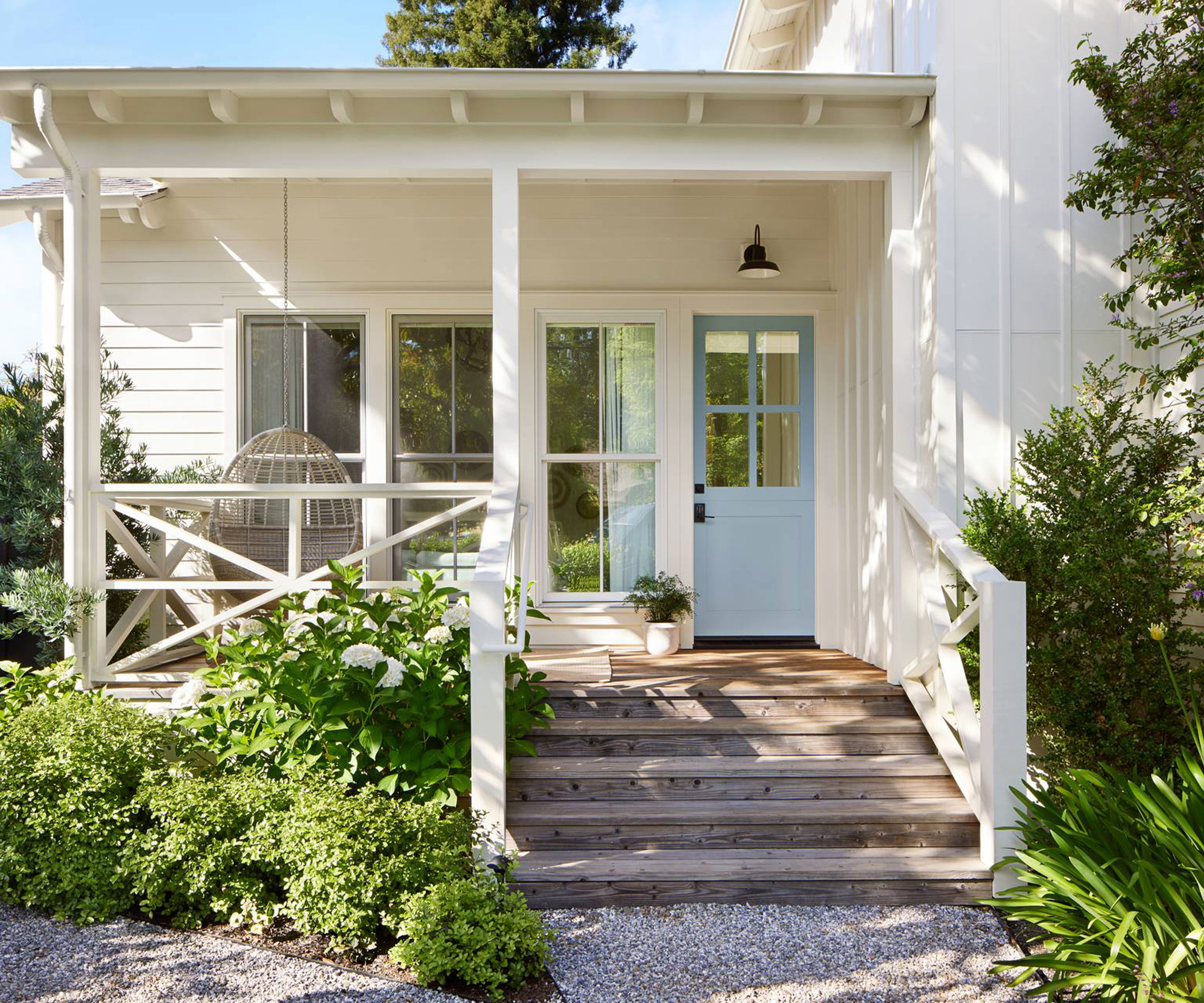
8 flowers for a warm, scented welcome
‘I love a great entrance, and there is no better way to welcome your guests than with fragrant flowers and herbs,’ says Elizabeth Daniels, floral supervisor at Blackberry Mountain.
‘My favorite smelling plants work in most USDA hardiness zones (up to 9) with proper care. These include climbers like heirloom roses, Carolina jasmine, 'peaches and cream' honeysuckle, and climbing hydrangea. Perennials such as bee balm and coneflower, as well as herbs like spearmint, thyme and chives also work very well.
‘When shopping for containers, I choose a variety of sizes with ones that allow climbers plenty of room to grow, and smaller ones for the herbs and flowers. Use three to five containers, and be sure to give each plant some room to mature.'
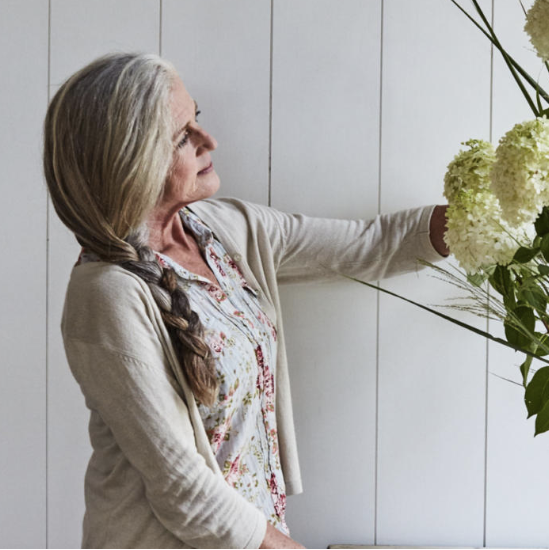
Elizabeth is responsible for designing the floral arrangements at Blackberry Mountain, a luxury wellness resort and spa surrounded by nature in the Great Smoky Mountains of East Tennessee.
1. Lilacs
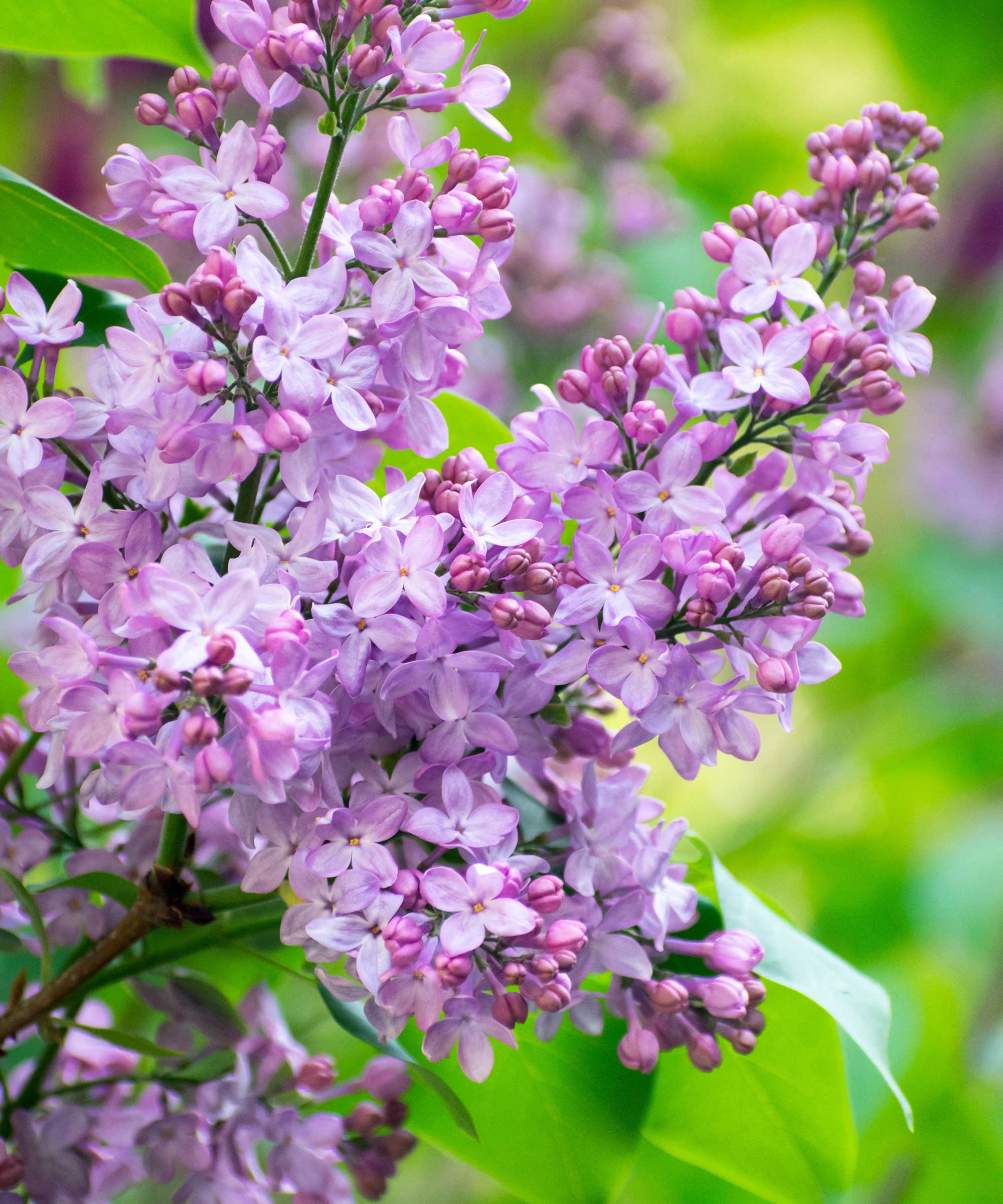
‘For US hardiness zones 3-7, lilacs are magnificent,’ says Marco Picano, co-owner of Picano Landscaping.
‘Dwarf varieties like "Miss Kim” or “Bloomerang” can be grown in large containers and provide a delightful fragrance that heralds spring.’
Because lilacs enjoy full sun, they are better placed towards the front or open sides of the porch rather in the shadier parts, where they won’t flower as well.
The common lilac can grow up to 15ft tall and 12ft wide, but the more compact dwarf varieties reach between 4-6ft tall and 3-7 ft wide. Even these 'small' lilacs will need plenty of room for their roots to spread, so bare that in mind when picking a container.
They like slightly alkaline, well drained soil. Use a testing kit like this one from Amazon to see if the pH is below 5.5. If it is, you can add lime like this True Organic garden lime from Amazon to increase it to 6.5-7pH and make it less acidic.

As the co-owner of Picano Landscaping, based in Reading, Massachusetts, Marco has years of experience at transforming outdoor spaces into scented paradises.
2. Star Jasmine

‘For a porch climber, consider confederate or star jasmine,' adds Marco. ‘It’s highly fragrant, producing white, star-shaped flowers, and is hardy in zones 8-10. In zones with colder winters, you might bring it indoors during the frosty season.’
It prefers direct sunlight as the shade will limit its growth and reduce the number of flowers it produces.
This climber grows well in pots and likes neutral to alkaline soil conditions, though it will cope if it's slightly acidic. Incorporate a trellis into the planter if you anticipate needing to move it inside during the winter to protect it. This planter from Walmart is on wheels so can be moved around easily.
Star jasmine is also known for its ability to deter mosquitos, which is another great reason for surrounding your porch with this headily perfumed flower.
3. Lavender
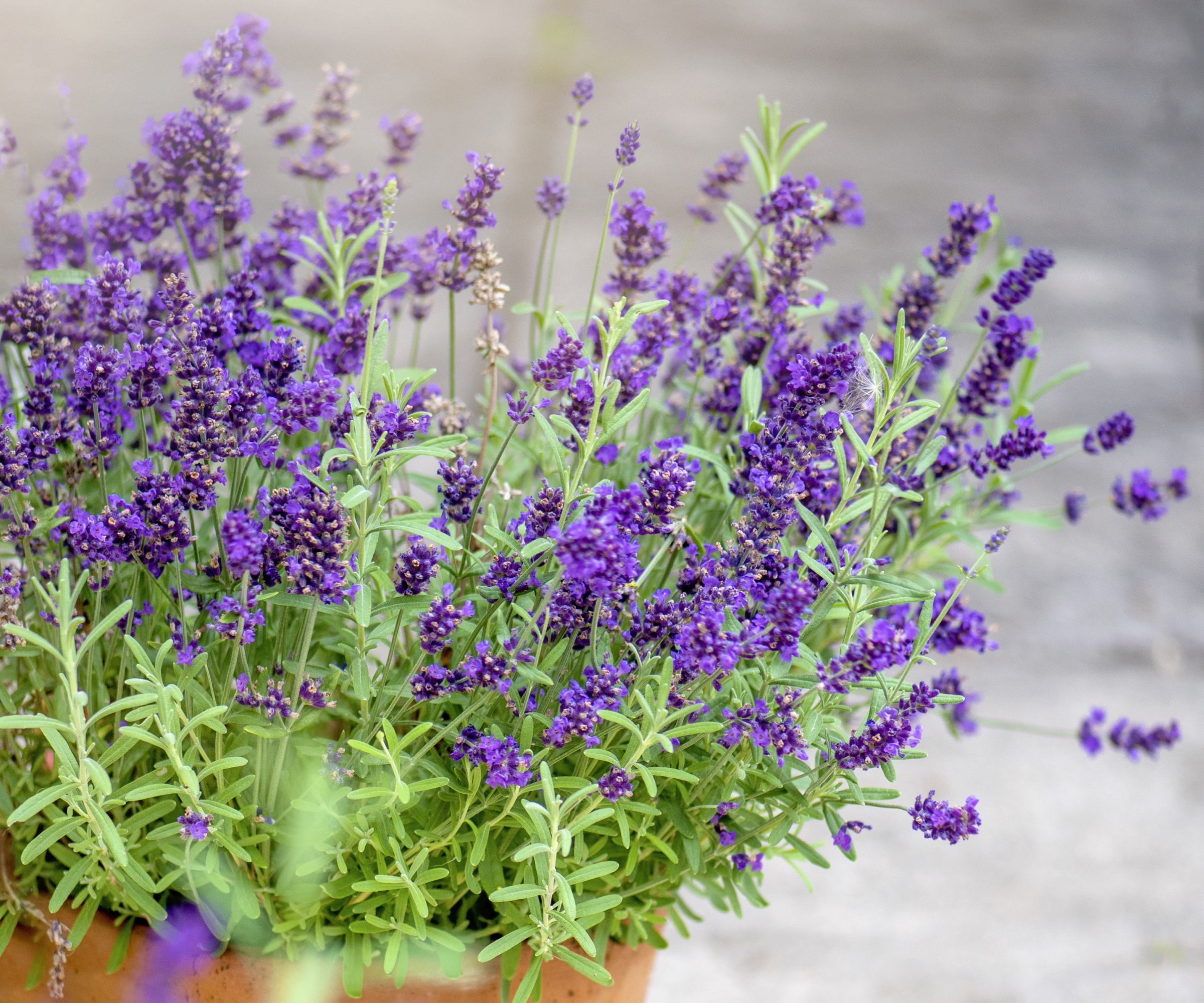
‘Lavender is a must,' adds Marco. 'Varieties such as Hidcote or Munstead are particularly fragrant and can cope well in planters. They thrive in zones 5-9, require minimal water once established, and prefer full sun.’
Place your lavender in a sunny spot where it is sheltered from the wind. It's a Mediterranean plant, so likes fast-draining poor soils that are sandy or chalky. Prune new lavender in the summer, after flowering, to encourage a dome-like and bushy shape.
While lavender is loved by bees and is a source of nectar for both them and butterflies, the scent deters bothersome insects like mosquitoes, flies, fleas and moths.
You can create contrast in your display by mixing three varieties of the familiar purple-shaded lavender from Walmart with four of white lavender (also available at Walmart).
4. Marigolds
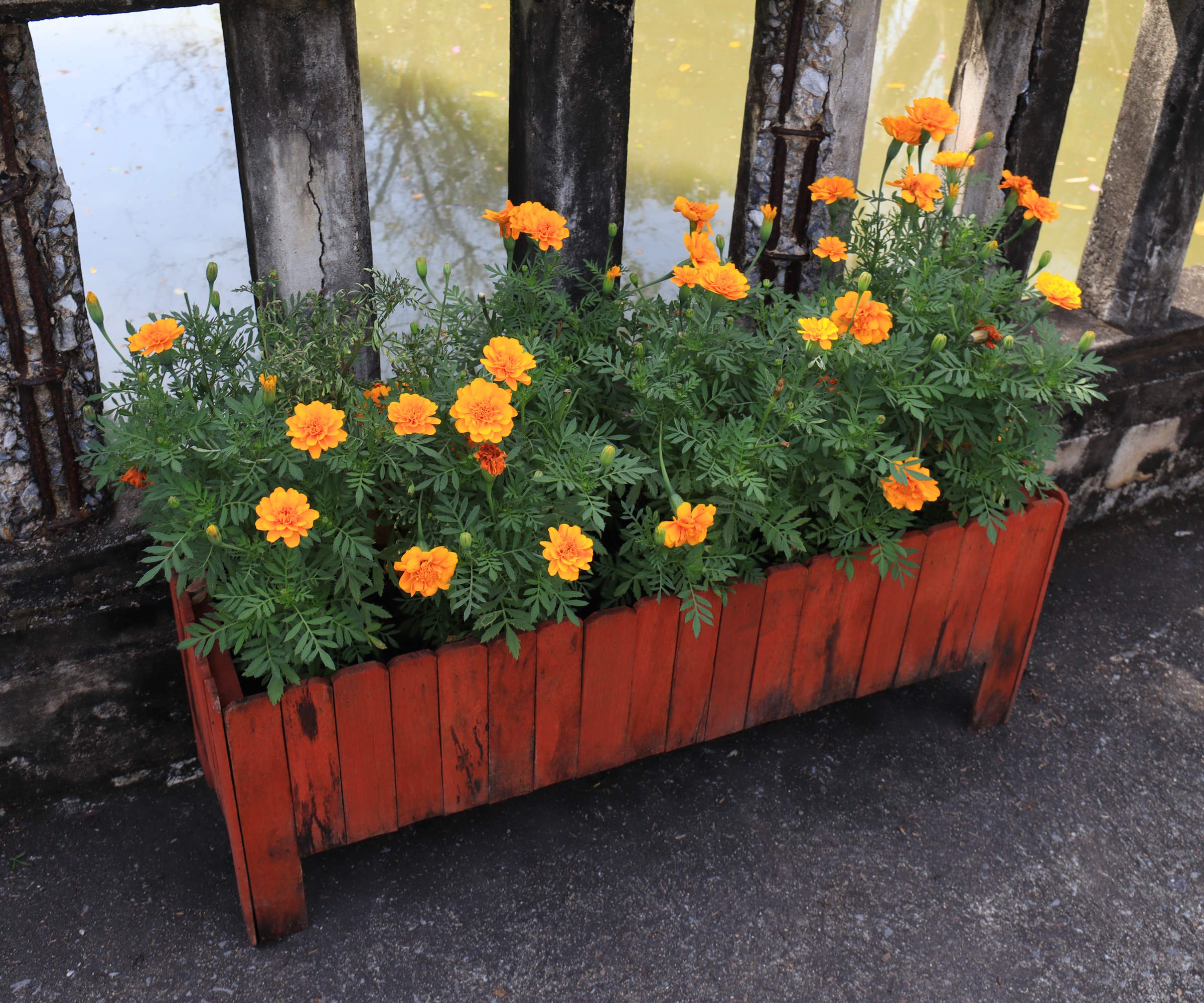
‘Marigolds emit a strong, spicy aroma that is both uplifting and protective, as they are known to repel certain pests,’ says Laura Janney, founder and owner at The Inspired Garden. ‘Their bright, cheerful flowers bring a sunny disposition to any space.’
These heat-loving plants thrive in well-drained, loamy soil in zones 2-11, and have long blooming seasons in zones 10 or higher, ensuring your porch is surrounded by scent all summer and into the fall.
Marigolds make great companion flowers if you are growing your own. Apart from attracting pollinators, they can protect greenhouse-grown tomatoes, as their scent helps to repel whiteflies. Dwarf types make good edging plants that may deter rabbits.
They are easy to grow from seed, or from a marigold kit like this at Nature Hills. And although they are annuals, if you stop deadheading them a month before it's due to turn frosty, the flowers will develop into seed heads that eventually burst and spread seed across the ground for a fresh crop next season.
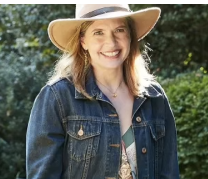
Based in New York, Laura has spent years designing high-end gardens in the Northeast, creating a sense of magic and wonder. She recently won the 2023 Houzz Best in Design award for her work on cottage-garden landscapes in the New York area.
5. Geraniums

'These offer a sweet, slightly citrusy scent that is pleasantly soothing,' says Laura. 'They are easy to care for and their lush blooms provide a burst of color and fragrance.'
Geraniums are a low-maintenance plant with a long-lasting flower that can start in spring and last well into fall. They require a loose soil with plenty of organic matter and watering once or twice a week (they aren't thirsty plants, so don't overwater).
Regular deadheading will help the plant stay looking full and healthy as the nutrients will be diverted to new buds rather than to the old and dying flower.
Geraniums are pollinator-friendly and the lemony scent will help to keep mosquitos away from your porch. Pick up a colourful collection like the Maverick Series of geranium seeds from True Leaf Market for a mass of colorful blooms that will last all summer long.
6. Salvia
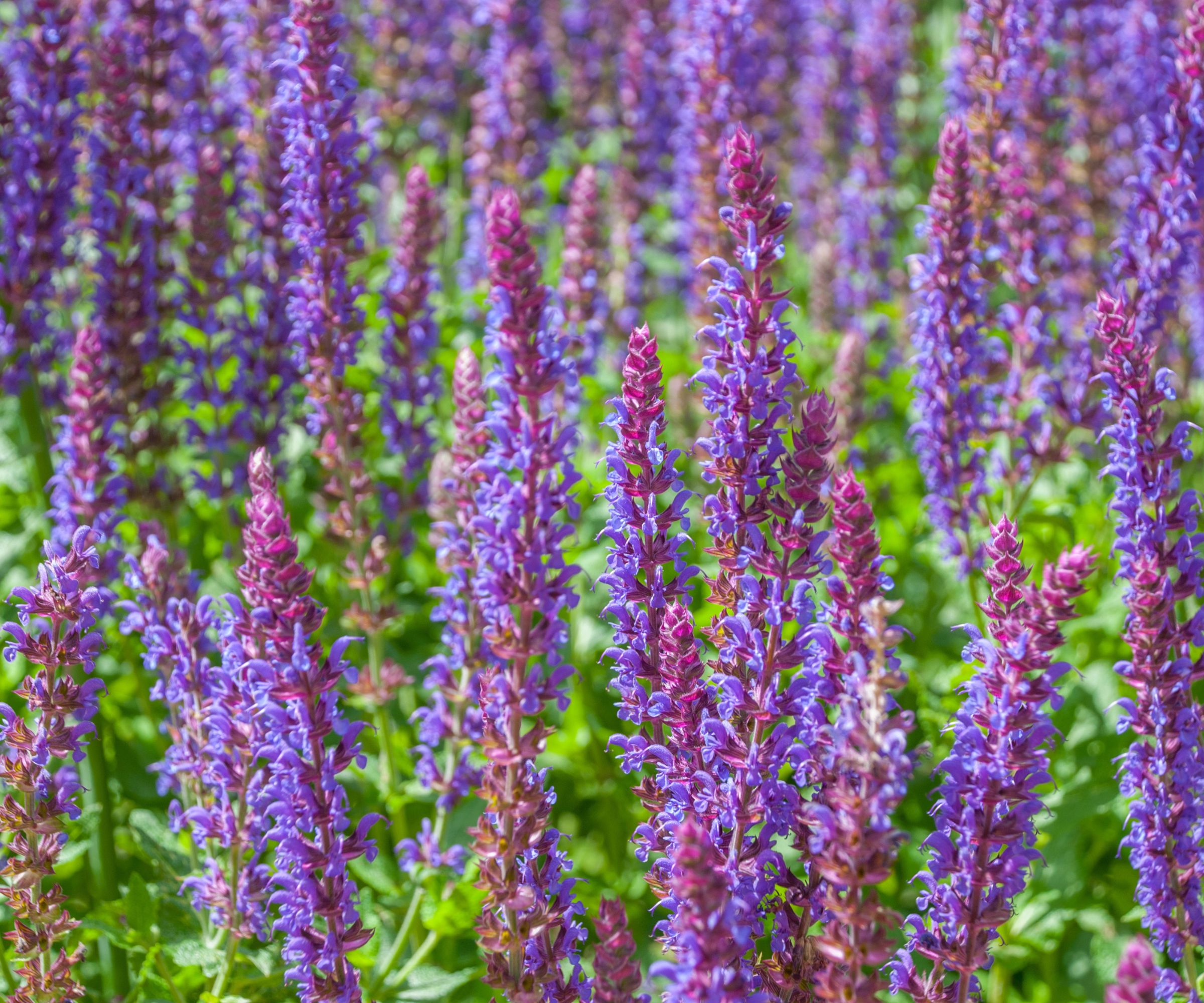
‘To create the same dramatic effect as a climbing plant, I recommend adding plants to your containers that can add height, such as salvia,’ advises Laura.
‘Salvia not only provides a vertical element but also contributes to the overall fragrance and visual appeal of the porch with its rich, aromatic foliage and striking blooms.’
Part of the sage family, many species are used as herbs. Rated for zones 3-9, they’re a draw for pollinators like bees, hummingbirds, and butterflies.
Use your porch to create your own kitchen garden with a planter like this one from Lowe's filled with sweet-smelling herbs ready for picking and adding to your recipes.
7. Sweet box
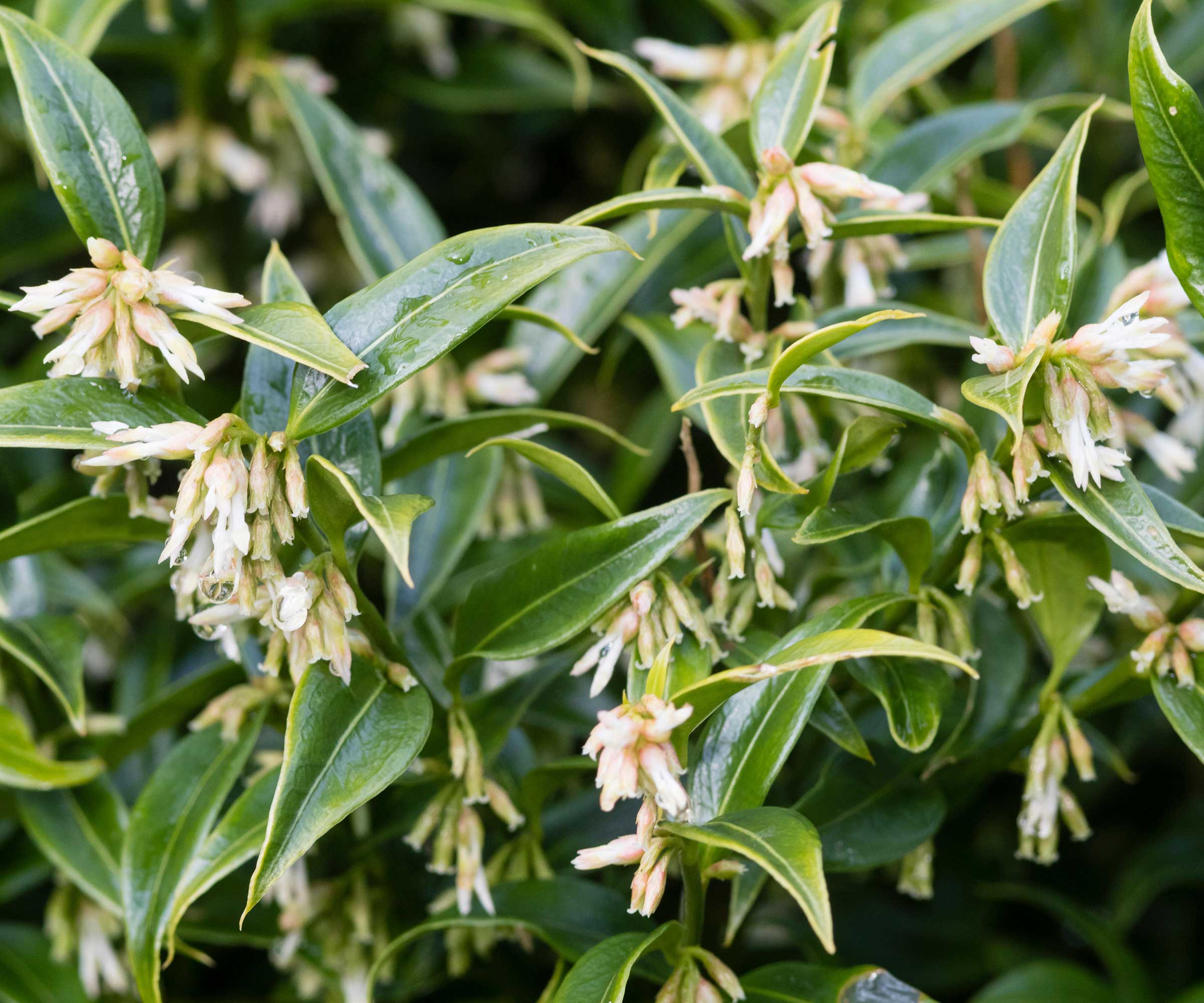
‘This small shrub has glossy, dark green leaves and clusters of tiny, highly fragrant white flowers,’ says Marek Bowers, a landscaper and gardener. ‘It works well in planters, adds a touch of elegance and fills the air with a powerful sweet scent.
‘It is suited to the climate of the north west coast, and prefers partial to full shade and well-draining, slightly acidic soil. Keep the soil evenly moist but not soggy.’
Sweet box flowers in winter, giving you an early source of scent before other plants come into flower. It has glossy black berries in summer, but as an evergreen it remains fresh and green all year round.
Try the aptly named Fragrant Valley Sweet Box from Nature Hills. It has a strong hyacinth-like smell and late-winter blooms that will perfume your porch and yard.
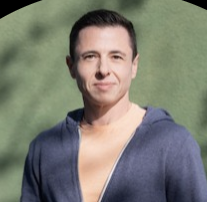
Marek is a self-taught sustainable gardener and landscaper. Starting with his own yard in Los Angeles, he has become an expert in eco-friendly and drought-tolerant gardening, sharing his knowledge and advice on his website, Bolder Green
8. Dianthus

‘This is a hardy perennial which has clove-scented flowers in pink, red, and white,’ adds Marek.
‘It is great for planters and loves full sun and well-drained soil. To maintain, water regularly but let the soil dry out between waterings.’
Suited to zones 3-9, Dianthus can bloom in the spring, summer and fall with deadheading after the first flowering encouraging a second show of color. In winter, dianthus in pots can be cut back and covered with a layer of shredded leaves or bark mulch for protection against frost.
This Georgia Peach Pie from Burpee has scented pale pink flowers with peach colored centers and is a repeat bloomer throughout the summer. Or try the Scent from Heaven Angel of Compassion, also from Burpee, which has masses of fragrant frilly pink flowers edged with red from spring until summer. Because it's an evergreen, it can decorate your porch over winter with its attractive blue-silver foliage.
The best yard should appeal to all the senses – sight, smell, touch and even taste. Discover the art to planting a scented garden to get a cohesive not clashing mix of fragrance.
Sign up to the Homes & Gardens newsletter
Design expertise in your inbox – from inspiring decorating ideas and beautiful celebrity homes to practical gardening advice and shopping round-ups.

Alison is a contributing gardens writer for Homes & Gardens, writing on a range of topics from plant care to garden design. She has recently landscaped the outside space of her Victorian home, replacing crazy paving and cracked slabs with new lawn, and is currently cultivating a fruit bed.
-
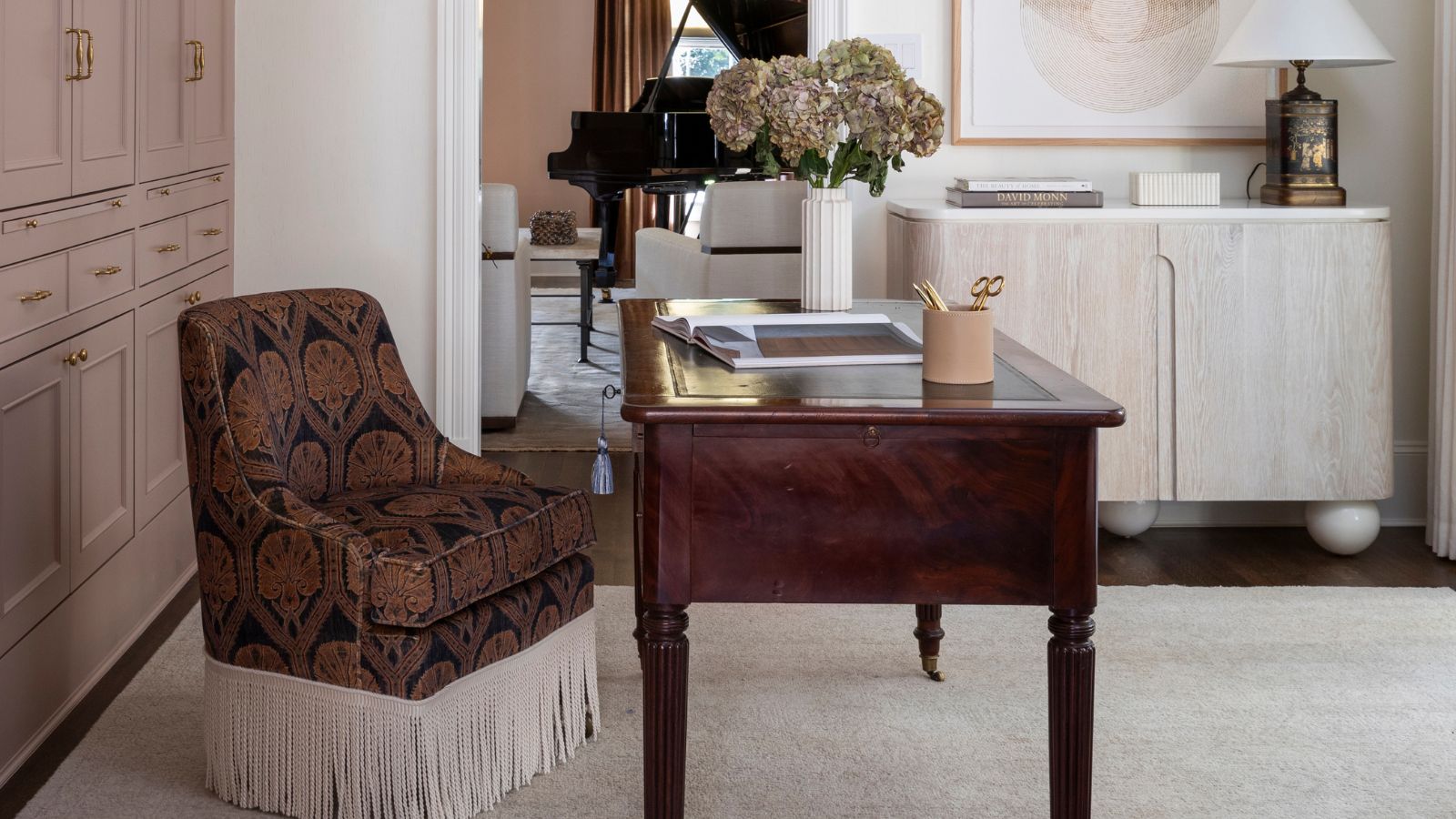 The rumours are true, the NYC trend for fringes and trimmings is actually happening – they are the secret weapon for making a room look expensive
The rumours are true, the NYC trend for fringes and trimmings is actually happening – they are the secret weapon for making a room look expensiveA trim or a ruffle is the finishing touch that can take a scheme from ordinary to the extraordinary in an instant
By Jennifer Ebert Published
-
 How to grow impatiens – garden experts reveal the secrets to growing this shade-tolerant, sparkling summer plant
How to grow impatiens – garden experts reveal the secrets to growing this shade-tolerant, sparkling summer plantBoth 'Busy Lizzie' and 'New Guinea' impatiens can thrive in shady yards
By Ellen Wells Published